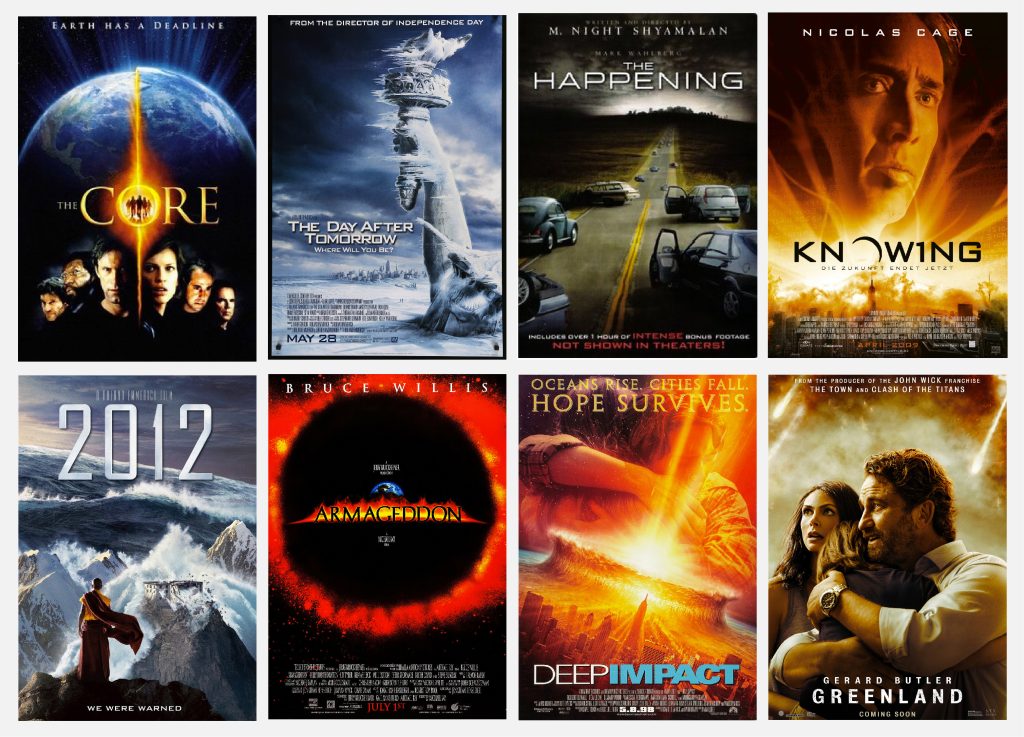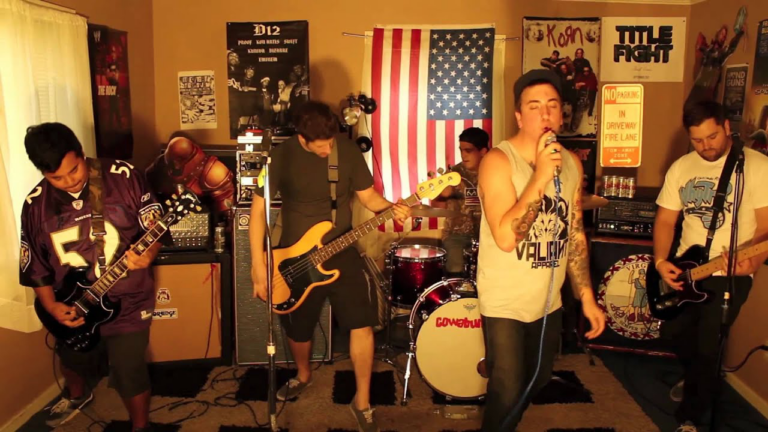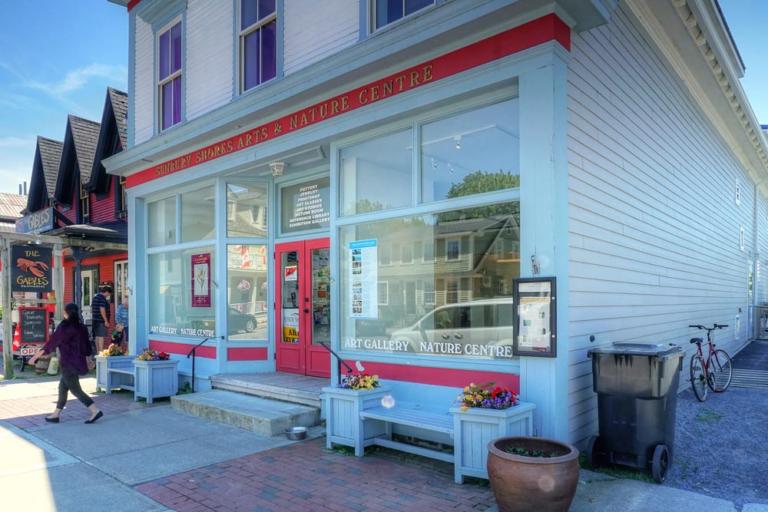Content Warning: this article discusses and describes films that contain suicide.
There is something wrong with people. We enjoy – no – we love watching disaster epics in which all life on earth is threatened or destroyed. Maybe it’s a reflection of our inherently self-destructive nature. Maybe it’s because we feel the planet is doomed and unconsciously think we can rebuild it better. But who really cares about that? We just want to see cities blow up.
To celebrate a year since the world actually ended, I’m going to rank the top eight doomsday disaster films. No alien movies (sorry Independence Day). No zombie movies (that’s a list for another time). We are looking for a certain type of film. One that revels in the destruction of massive cities and plays into certain tropes. Academic experts pulled from their classrooms, families fleeing the biggest centres of disaster just in time, large casts with a mix of big names and character actors, large crowds craning their heads as the disaster of choice (meteor, tsunami, plane crash, solar flare) heads their way.
To judge doomsday disaster movies, we must appreciate them in all their silliness. We must bask in their tropes. We must applaud mass casualties. We must shed tears at the schmaltziest of moments.
Without further ado:
8. The Core
The earth’s core has stopped spinning, and our resident scientific expert/professor is here to save the day.
The Core embodies every trope of the doomsday disaster sub-genre, yet fails to hit the mark in so many ways. The film contains some amazing hammy scenes (flocks of pigeons losing their minds and terrorizing a crowd of onlookers/ the magmatic melting of San Francisco’s Golden Gate Bridge), I’ll give it that. But so much of the film is made up of eyesore special effects that communicate little disaster and cardboard characters that fail at investing the viewer into any of their cheesy deaths. This one could have been good if it stewed a little more in the silly disaster scenes. I give it some bonus marks for the ridiculously implausible storyline.
7. Armageddon
A comet the size of Texas is going to destroy all life on earth. But don’t worry, oil barons are here to save the day.
For many people, this is the film that defines the doomsday disaster subgenre. It was a box office hit with a memorable cast including Bruce Willis, Ben Affleck, Michael Clarke Duncan, Billy Bob Thornton, Liv Tyler, and Steve Buscemi. Despite the spectacle, this film just doesn’t hit the mark. There is the expected ham and cheese, but there is little audience connection or investment in the action. The performances and dialogue are so bad in this one that it transcends the acceptability of shlock. This one works only as a spectacle, with some great comet impact scenes of cities around the world being obliterated.
6. The Happening
Plants are causing people to commit suicide. Yes, that’s right. Plants.
This one was a choice. Released smack dab in the middle of M. Night Shyamalan’s fall from grace (before his recent resurgence in popularity), The Happening became popular as a B-movie joke rather than as a successful doomsday disaster film. There are some legitimately unsettling scenes of mass suicides including people hanging from trees and leaping from buildings (one particularly disturbing scene shows a man laying down in front of a lawnmower). Despite it being a terrible film, The Happening maintains an active spot in film mythos and is unlikely to escape discussion for years to come. It’s cheesy, it’s unbelievable, and the performances are terrible, but it is all the better for it.
5. Greenland
A comet that is supposed to pass by earth breaks apart, sending shards raining down on the world. Gerard Butler must save his family from this disaster which threatens to destroy the planet. No expert scientists are trying to destroy the comet in this one, just high-octane running, hiding, and comet chaos.
The newest addition to this list might not have the budget of some of the well-known disaster flicks, but it has the atmosphere and the tension to make up for it. While not heavy on gigantic disaster scenes, the allusion to destruction raises the stakes and keeps the viewers on edge. There is ham but very little cheese in this film, which works for what it is trying to achieve. This is an edge of your seat thriller and it gets your blood rolling, harkening back to what made the doomsday disaster films of yonder years so appealing to crowds of viewers. It’s a shame the pandemic prevented this one from wide theatre distribution, instead forcing it straight to Amazon Prime. This one may age better, but to avoid recency bias, I’m placing this one in a safe spot.
4. Knowing
In the ’50s a little girl who hears voices predicts massive catastrophes, and in the present day, only Nicholas Cage realizes it. This film lays the absurdities on thick. We are treated to Nicholas Cage acting bonkers in a film replete with sublimely destructive scenes including planes falling from the sky, and a solar flare engulfing the earth. The death toll is high in this one.
This film is so thematically chaotic it seems like an algorithm spat it out and I love every minute of it. People hate the batshit bonkers ending (SPOILER ALERT alien angels turn Nick Cage’s son and his friend into a new Adam and Eve, saving them from the earth’s destruction by depositing them on an Edenic planet). As someone who revels in bad and cheesy disaster flicks, I’m all for this wild 180. The aliens get a pass in this one since they don’t dominate the film’s content.
3. 2012
A temperature increase in the earth’s core causes natural disasters to decimate the earth as John Cusack tries to save his family from one threat after another, as predicted by a Mayan prophecy (but not really).
The hype for 2012 was huge, and audiences had high expectations for this film. Director Roland Emmerich was certainly no amateur, having directed previous disaster films The Day After Tomorrow and Independence Day. There are attempts at plot here, but none of it matters. This film is all spectacle and it barely tries to hide it, with what are probably the most bombastic, over-the-top disaster scenes in any film to date, including Los Angeles collapsing into the earth as a plane narrowly escapes and an immense volcanic eruption.
2. The Day After Tomorrow
Global warming threatens life on earth with an immensely devastating climate catastrophe. Resident expert Dennis Quaid tries to warn everyone, but it’s too late. As the Earth freezes, he must try to find his son (played by Jake Gyllenhaal).
This one stands out from the rest of the crop. Rather than a comet, it is the inescapable disaster of climate change that obliterates the earth with mega tornadoes, tsunamis and global freeze. This one has one of my favourite disaster scenes of all time, a giant tsunami engulfing New York City. Sure, we’ve seen this before, but no one does it better than director Roland Emmerich.
1. Deep Impact
On the surface, the concept is almost identical to Armageddon. A giant comet threatens to destroy the earth, but the world fights back. But there is so much more beneath the surface.
Released the same year as Armageddon, Deep Impact had a pretty shallow impact at the box office. In the years since, it’s almost been forgotten, not holding the same place in the cultural imagination as Armageddon, but I would argue for it is a far superior film. There are multiple compelling storylines, the edge of your seat thrills, and disaster scenes that were the crème de la crème when the film was released. The all-star cast (Robert Duvall, Elijah Wood, Morgan Freeman, Vanessa Redgrave) brings some great performances to the table. While the film has its share of ham, the well-developed subplots pull at the heartstrings. This female-directed (Mimi Leder) doomsday disaster film also features Téa Leoni as an MSNBC journalist, in what is the strongest female-dominant storyline in any doomsday disaster flick. This one has it all, including a terrifying scene of a tsunami swallowing New York City.




